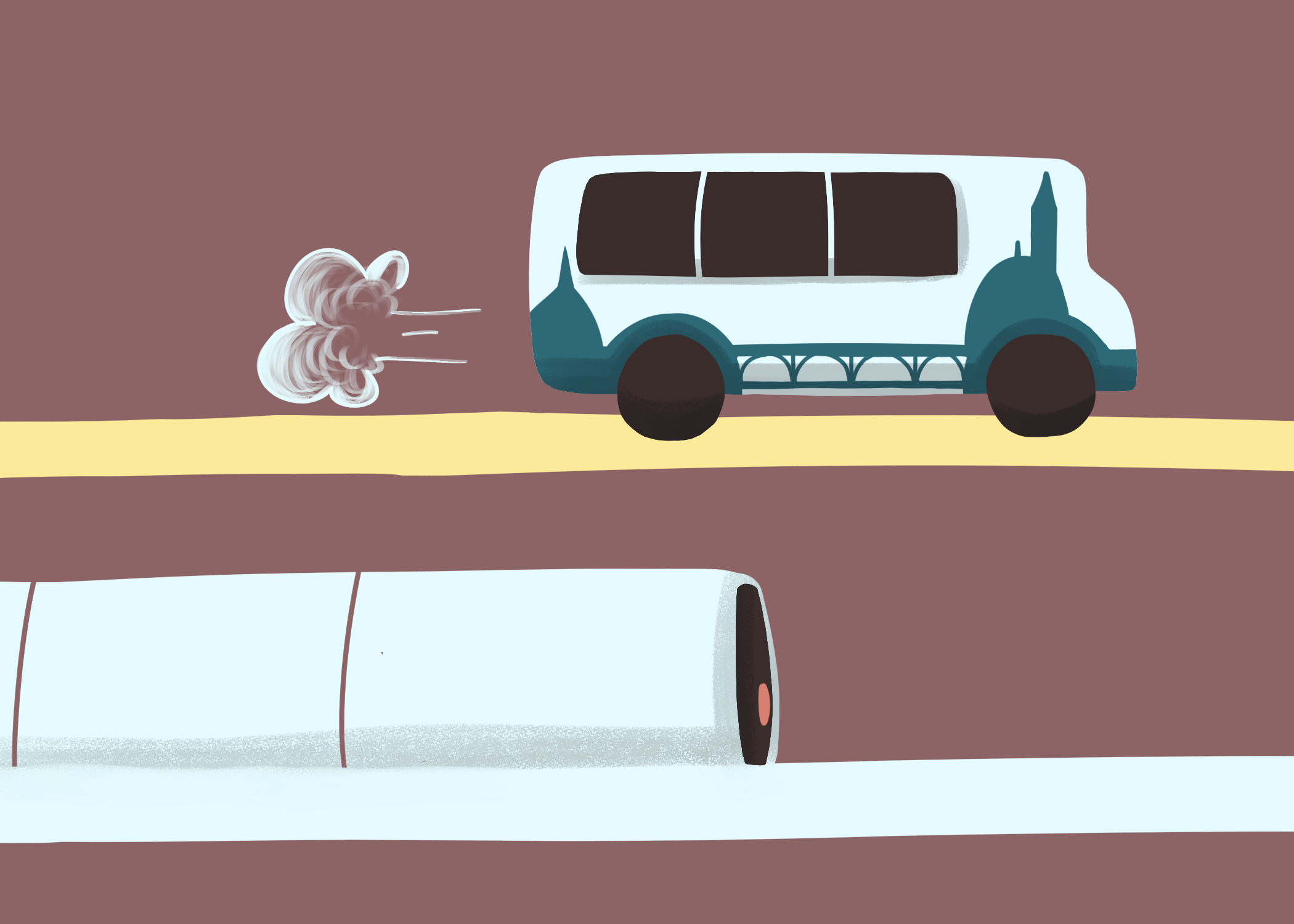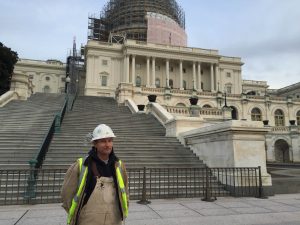Beads of sweat run down my face and soak my shirt. Onlookers would probably assume I just ran a marathon across the city or am returning from one of D.C.’s many trendy workout classes. No. Instead, I am winded by the impossibility of traveling downtown via public transportation from Darnall.
However frustrating it may be, I am notorious for my dedication to finding cheap public transit options instead of calling an Uber, often at the expense of my sanity.
Instead of an overpriced ride to LAX, I once took the LA Metro miles in the opposite direction of my friend’s USC dorm to get on a questionable $15 bus ride to the airport. A summer in Barcelona found me obsessed with the city’s timely metro system, punctual to the point that “the train was late” was never a functional excuse to my host mom for getting back past curfew. And in my freshman year of high school, school-provided metro card in hand, I regularly arrived half an hour early following the absurdly-routed bus ride. That last one, admittedly, was powered by my mother’s refusal to endure our Seattle suburb’s early morning highway traffic. Regardless, I call myself a committed bus commuter.
Excited about the prospect of moving to a city with a more established public transportation system, I was ready to bring my unfounded perseverance and support of mediocre metros to the Hilltop. Unfortunately, much like Leo’s “Mexican” food and the campus bookstore’s t-shirt designs, Georgetown’s Metro connectivity leaves something to be desired.
There is something almost heartbreaking about the urge to turn to overpriced rideshares, perhaps sneakily on a parent’s credit card, at the realization that your overzealous transportation schemes for a night out no longer work after a too-long pregame, or that plans to use public transit were never drafted in the first place.
We should not abandon D.C.’s transit system just because it is imperfect. Instead, we should recognize its merits and continue to support it in pursuit of a carless way of life.
Coming from a similarly disconnected neighborhood in a major city, I quickly subscribed to the narrative that the lack of a Georgetown Metro stop is the classic story of a close-minded and powerful neighborhood association’s obstruction. But, it turns out, the bigger picture of the Georgetown stop is more nuanced.
From the conception of the city’s metro system in 1967, a stop close to campus was never seriously considered. Complications around building a line near the Potomac and the C&O Canal, paired with an outdated view of public transportation as exclusively for connecting suburban workers to their downtown offices, meant the project was doomed from the start. Admittedly, there was some anti-Metro rhetoric from the neighborhood, though this was consistent across the city and had no impact on city planning decisions. More modern excuses blame tricky land use policies, the requirement for an egregiously deep station design, and the ever-present rumor of the aforementioned neighborhood opposition.
But, the worst excuse of all, at least to me, is that metro systems are just too expensive. In one of the richest countries in the world, a lack of investment in transit infrastructure shows a misalignment of political priorities. It is this same rhetoric that, instead of investing in sustainable transportation systems, effectively turns Los Angeles’ roads into parking lots, separates Chicago from its largest natural resource with an eight-lane highway, and forces millions of Americans into car-reliant lifestyles. It is ridiculous to simply blame budgeting issues.
The lack of a Georgetown Metro station is reflective of a much larger public transit issue in the United States today. Strong public transportation systems are safer, cheaper, and better for the environment. By contrast, car-reliant lifestyles utilize lots of land, increase the likelihood of vehicular accidents, and emit carbon dioxide.
Fortunately, we are not far from a strong system. D.C.’s Metro has good customer satisfaction and predictability and is often ranked the A of its size in the U.S. It just needs expansion to benefit Georgetown neighborhood residents hoping to explore the city.
We must remember that patience is required with all effective logistical changes. Just as it is easy to wish for improved dorm facilities and in the same breath complain about on-campus construction, we must remember that building functional systems takes time. But that isn’t to say that we shouldn’t be demanding more and working toward having well-connected cities.
There is hope to be had as we patiently await future city planning. The uptick of rideshare bikes and scooters, albeit annoying on the already crowded campus walkways, signals the possibility of private innovation in the face of government inaction. These alternatives prove that perhaps the prospect of carless cities and the hope of transit enthusiasts such as myself can persist a little longer, while also providing a functional means to travel to other well-connected parts of the city. The GUTS bus also demonstrates the university’s interest in empowering student travel. The university-owned fleet of shuttles helps students break out of the Georgetown bubble, though restricted weekend service makes its use limited.
It is clear that D.C. is far from the artful systems found in other capital cities like Berlin, Tokyo, and London and it is important to demand more. But for now, we must continue to trust in the journey, favoring the flawed Metro system over perpetuating car-centered transportation, even if that means we arrive at our destination a bit sweatier than we hoped.






